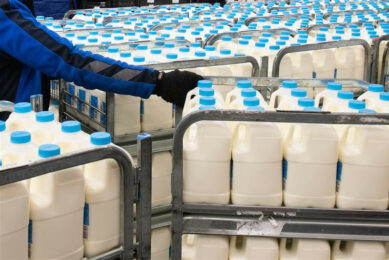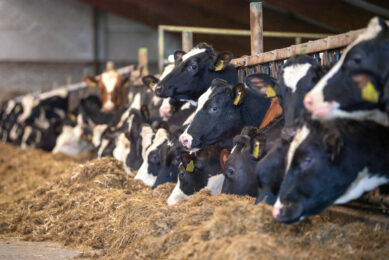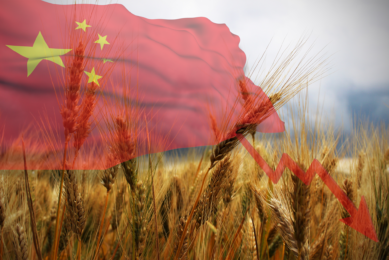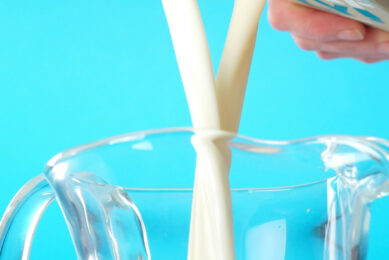Idele conference: Chinese dairy sector driven by consumption

In his presentation in Paris on 31 May, Jean-Marc Chaumet, Economist Director at CNIEL*, explains that consumption should remain a driver of the Chinese dairy market despite difficulties met at the beginning of 2022.
Entitled ‘2022 global markets in turmoil’, the Idele conference focused on the situation and the future of dairy markets in 2022. In his presentation entitled ‘China, a year 2022 full of uncertainties’, Jean-Marc Chaumet reminds the audience that 2021 has been a good year for the Chinese dairy sector, with production up for the fourth consecutive year.
Milk production increased 7.2% in 2021/2020 approaching the 40 million tonnes mark and increased 15% between 2019 and 2021. One of the reasons for this increase is a record milk price in 2021, close to €600/1,000 litres at the end of 2021. “The price of milk has increased by 24% in 3 years in local currency, the absolute record in China,” explains Chaumet, adding that production is marked by an accelerating concentration of livestock, with 43% of herds on farms with more than 1,000 animals and 16% on farms with more than 5,000 animals in 2020.
Record profit
Major Chinese dairy groups posted good results in 2021, including Youran (up 16%) and Modern Dairy (up 32%). Sales also increased for the main Chinese dairy manufacturers, led by Yili and Mengniu, who are increasing their dominance over their competitors. According to Euromonitor, Yili and Mengniu represented 48% market share for liquid dairy products in 2021, and 54% market share for fermented products.
“Chinese leaders are among the top 10 dairy companies in the world,” added the speaker, giving the examples of Yili ranking number 5 just behind Danone (with €12.1 billion turnover in 2020) and Mengniu ranking at the 9th position just behind Arla with a €9.7 billion turnover in 2020.
Another driver of the Chinese dairy success is consumption, which continues to grow. Sales in urban areas of milk and fermented products increased by 4.4% in 2021/2020 in value with a penetration rate of 99.6% in 2021 (KantarWorldPanel) while cheese sales jumped of 32.7% in value with a penetration rate to 29.3% in 2021.
Innovation
“Another strong driver of Chinese consumption of dairy products is innovation,” added Chaumet, stating that more than 400 new products were launched in China in 2021, 4 times more than in the US. Examples of new dairy products in China include Zhen yoghurt (fermented product with less sugar, the addition of white peach, rolled oats and barley), and Yili-Jindian, premium milk from imported purebred Jersey cows.
To meet this increase in consumption, Chinese imports of dairy products rose sharply in 2021: up 32% for fat powders, 27% for lean powders, 18% for liquid milk, with a very strong increase in cheese (+36%/2020) and cream (40%) purchases.
Another highlight of the Chinese dairy market is a resurgence of consumer confidence in national brands. “Since 2016, national brands have been regaining market share as stricter Chinese regulations and advertising campaigns begin to achieve their goals,” said Chaumet.
More difficulties for 2022
In the second part of his presentation, the speaker highlighted several issues occurring since the beginning of 2022, such as higher production costs for dairy farmers. “The price of imported soybeans rose very sharply in March-April, with stable imports over the first 4 months,” he added, further stating that the price of maize has seen a moderate growth with imports up 21% in the first four months of 2022/2021.
Consumption should continue to be a strong driver of the Chinese dairy sector.
On the other hand, the confinement of several Chinese cities is hampering consumption and trade, resulting in lower milk production in March-April and a downward trend in milk prices (-2% on March-April-May 2022/2021). The month of April was marked by an unusual drop in the price of milk and yogurt, with increasing volumes of dried milk powders. Chinese imports of dairy products were down at the start of 2022 (-20% for skimmed milk powder and liquid milk, -43% for whey powder), and only fatty powders show a rise in imports (+7% over the first four months of 2022/2021).
“Consumption should continue to be a strong driver of the Chinese dairy sector,” he concluded. This consumption should grow faster than production, the country’s objectives being to achieve at least 70% self-sufficiency in milk and dairy products, with the development of high-value end products or new markets such as powders for the elderly.
* CNIEL’s (Centre national interprofessionnel de l’économie laitière) main mission is to organize the French dairy industry in a coherent manner in order to promote its economic development.
Join 13,000+ subscribers
Subscribe to our newsletter to stay updated about all the need-to-know content in the dairy sector, two times a week.










